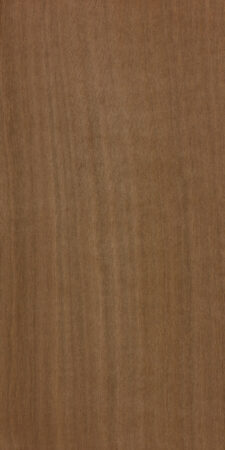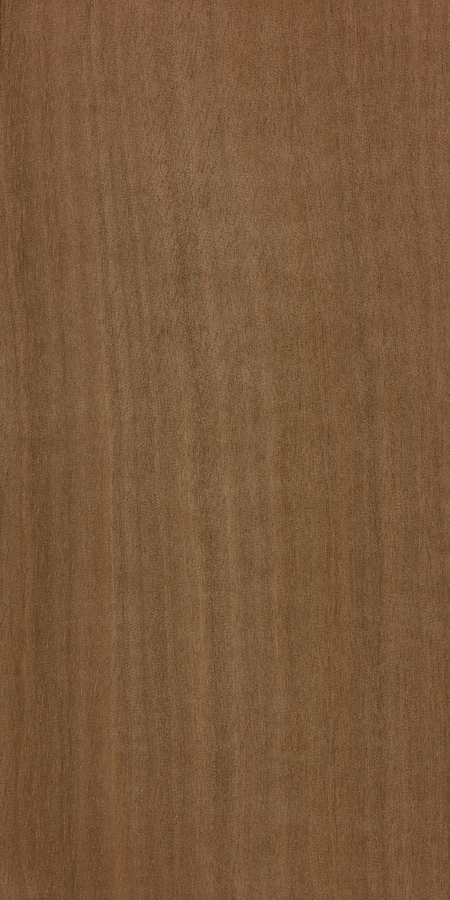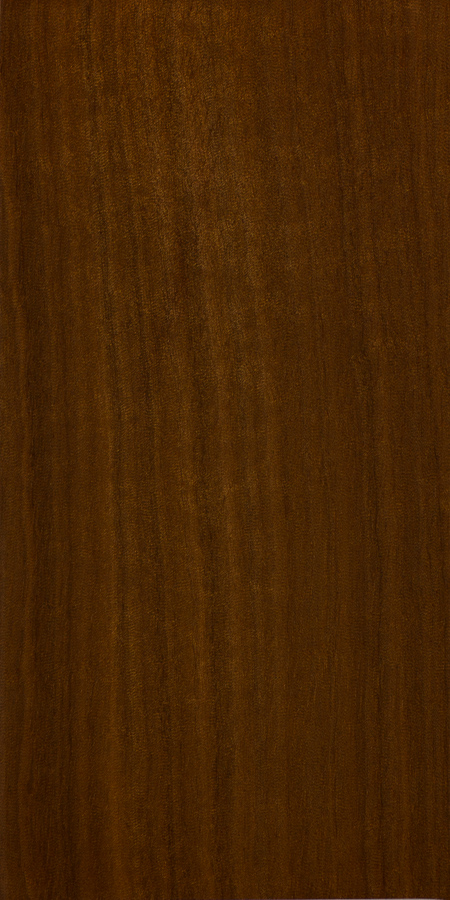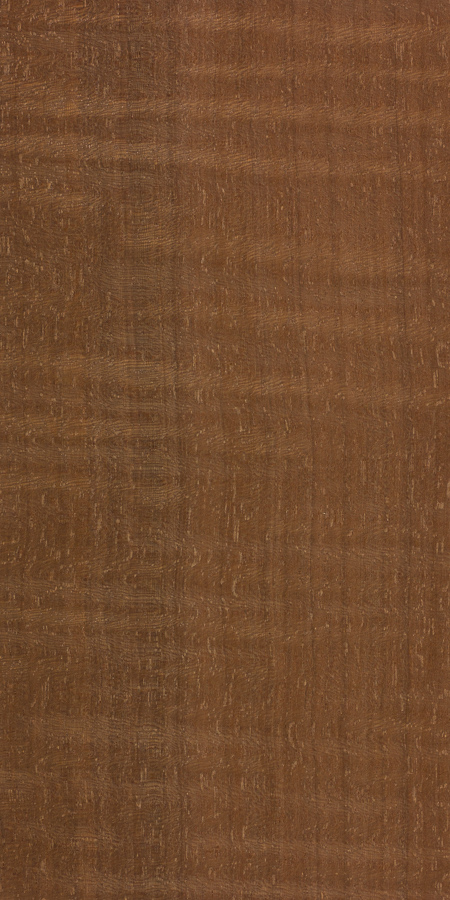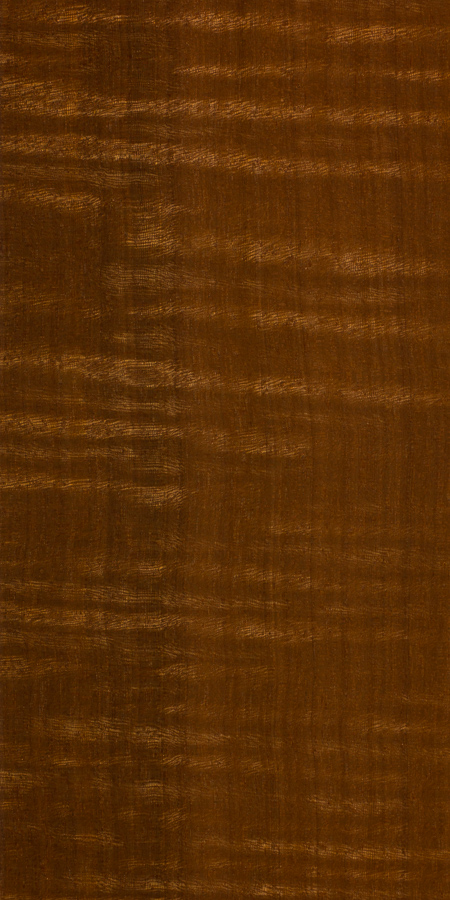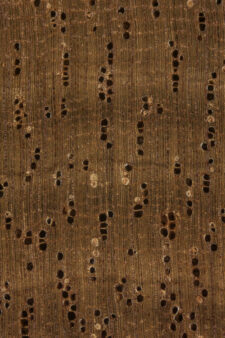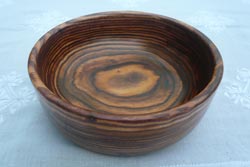Common Name(s): Makore, douka, cherry mahogany
Scientific Name: Tieghemella heckelii (and T. africana)
Distribution: Western and Middle Africa (from Sierra Leone to Gabon)
Tree Size: 180-200 ft (55-60 m) tall,
4-6 ft (1.2-1.8 m) trunk diameter
Average Dried Weight: 42.9 lbs/ft3 (685 kg/m3)
Specific Gravity (Basic, 12% MC): 0.55, 0.69
Janka Hardness: 1,200 lbf (5,350 N)
Modulus of Rupture: 16,330 lbf/in2 (112.6 MPa)
Elastic Modulus: 1,552,000 lbf/in2 (10.71 GPa)
Crushing Strength: 8,290 lbf/in2 (57.2 MPa)
Shrinkage: Radial: 5.5%, Tangential: 7.7%,
Volumetric: 12.4%, T/R Ratio: 1.4
Color/Appearance: Heartwood pink or reddish brown, sometimes with streaks of mild color variation. Yellowish sapwood can be two to three inches wide, and is clearly demarcated from the heartwood. Figured grain patterns (such as mottled or curly) are a common occurrence.
Grain/Texture: Grain generally straight, though interlocked or wavy grain is sometimes present. Fine, even texture with good natural luster.
Rot Resistance: Heartwood is very durable, and is also resistant to insect attack.
Workability: Generally easy to work, though sections with interlocked grain can cause tearout during planing or other machining operations. Makore will react when put into direct contact with iron, becoming discolored and stained. Makore also has a pronounced blunting effect on cutters due to its high silica content. Besides this dulling effect, makore turns well, and is easy to glue and finish.
Odor: No characteristic odor.
Allergies/Toxicity: Although severe reactions are quite uncommon, makore has been reported to cause eye, throat, and skin irritation, as well as headache, giddiness, and central nervous system and blood effects. See the articles Wood Allergies and Toxicity and Wood Dust Safety for more information.
Pricing/Availability: Available in lumber and veneer form. Prices should be in the mid range for an imported hardwood. Boards and veneer with figured grain patterns are likely to be much more expensive.
Sustainability: This wood species is not listed in the CITES Appendices, but is on the IUCN Red List. It is listed as endangered due to a population reduction of over 50% in the past three generations, caused by a decline in its natural range, and exploitation.
Common Uses: Veneer, plywood, furniture, cabinetry, flooring, boatbuilding, musical instruments, turned objects, and other small wooden specialty items.
Comments: Also grouped with makore is Tieghemella africana, sometimes called douka. Both woods are used interchangeably. Makore is sometimes used in place of African mahogany (Khaya spp.), and has been sold under the trade name cherry mahogany, though the wood is not closely related to any of the species or genera in the mahogany (Meliaceae) family.
Images: Drag the slider up/down to toggle between raw and finished wood. There’s also a second sample with curly figure.
A special thanks to Justin Holden for providing a wood sample of this wood species.
Identification: See the article on Hardwood Anatomy for definitions of endgrain features.
Porosity: diffuse porous
Arrangement: predominantly in radial multiples of two to five
Vessels: large, few; tyloses/deposits occasionally present
Parenchyma: banded (reticulate)
Rays: narrow (not visible without magnification); normal spacing
Lookalikes/Substitutes: Makore has sometimes been compared to various mahoganies, but it can usually be separated from most other lookalike woods on the basis of its relatively uncommon pore arrangement into radial multiples. The pores will appear as though they are stacked vertically (or slightly diagonally) when viewed on the endgrain.
Notes: Growth rings are not distinct.
The Tieghemella genus only contains two species, both of which are sold interchangeably as makore.
Related Content:

